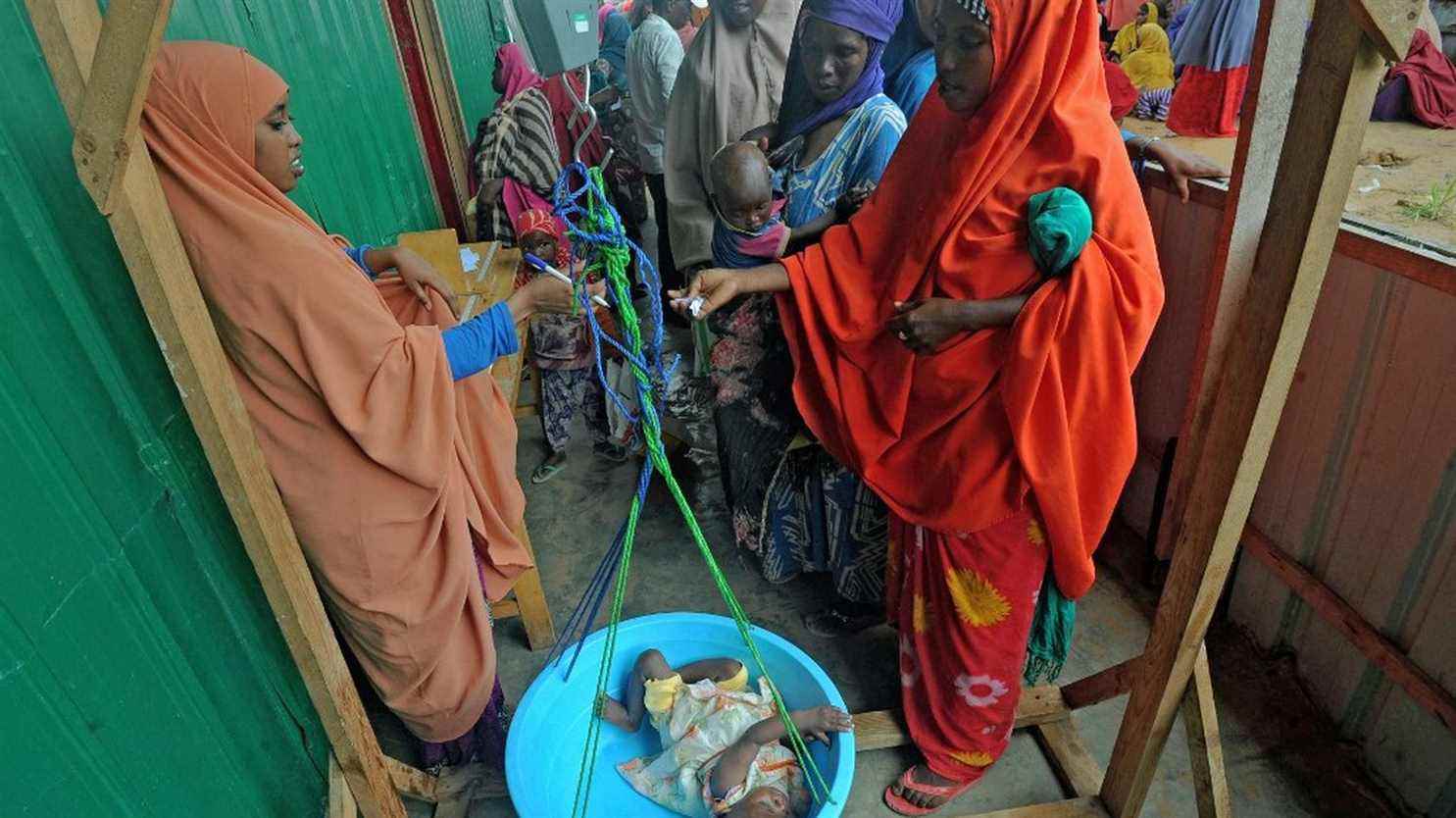From southern Ethiopia to northern Kenya via Somalia, the Horn of Africa is facing a drought that is alarming humanitarian organizations, with nearly 13 million people at risk of hunger. In these regions where the population lives mainly from livestock and agriculture, the last three rainy seasons since the end of 2020 have been marked by low rainfall, in addition to an invasion of locusts which ravaged crops between 2019 and 2021. “The Horn of Africa represents 4% of the world’s population but 20% of the population in a state of food insecurity”, noted, on February 11, the director of the World Food Program (WFP) for East Africa, Michael Dunford.
Severe drought in #Kenya, #Somaliaand #Ethiopia is directly affecting:
crops
animals
and up to 13 million peopleImmediate action is needed to avoid the worst consequences. pic.twitter.com/YcYghaDxCH
—World Food Program (@WFP) February 9, 2022
(Translation : “A severe drought is affecting Kenya, Ethiopia and Somalia. Immediate action is needed to avoid severe consequences.”)
According to the UN, 5.7 million people need food aid in southern and south-eastern Ethiopia, including half a million children and mothers suffering from malnutrition. In eastern and northern Kenya, where the president declared a state of national disaster in September, 2.8 million people need help. In Somalia, the number of people classified as severely hungry could drop from 4.3 million to 4.6 million by May, if no urgent action is taken. The authorities declared a state of humanitarian emergency in November 2021. In this country, “Malnutrition has reached crisis levels”recently alerted a spokesperson for Unicef in Somalia, Victor Chinyama, calling for “act now“: “If we wait for the situation to deteriorate or for famine to be declared, it may be too late.”
Somalia: Time is running out for 1.4 million children at risk of hunger and drought @VictorChinyamaspokesperson @unicefsomalia sound the alarm @UNICEF_ENhttps://t.co/e8uXYV4K0v
— UN News (@UNinfo) February 19, 2022
In 2017, early humanitarian mobilization averted a famine in Somalia, unlike 2011 when 260,000 people, half of them children under the age of six, died of hunger or hunger-related disorders. At present, only 2.3% of the UN appeal to mobilize 1.46 billion dollars (1.23 billion euros) to meet the needs in Somalia in 2022 has been filled.
“We have (…) until the middle of this year, until June, a very narrow window, to intensify urgent actions and avoid the worst-case scenario”
Rein Paulsen, Director of FAO’s Office for Emergencies and Resilience
Beyond the direct fatal consequences, the shortage of water and the scarcity of pastures are also sources of conflict, especially between herders. Livestock, an essential means of subsistence in this region, are dying in droves. In Kenya, as many as 1.4 million head of cattle perished, according to the National Drought Management Authority (NDMA). In this country renowned for its reserves and natural parks, wildlife is also threatened. Many cases of wild animals (giraffes, antelopes…) dead for lack of water and food have been recorded. It also happens that animals leave their usual habitat area in search of water or food. In the center of the country, felines attacked herds, elephants or buffaloes came to graze on farms, arousing the anger of the inhabitants.
New seasonal forecasts for the Horn of Africa, currently hit by drought, predict “a more abundant rainy season in many parts of the region”notes the World Meteorological Organization (WMO), quoted by UN Info, noting however forecasts to be interpreted with caution.
A new forecast of good March-May rains for much of the #drought-stricken Greater Horn of #Africa is coupled with warnings by @icpac_igad to “prepare for worst case scenarios” after 3 successive failed rainfall seasonshttps://t.co/zNalAkW9xp#GHACOF60 pic.twitter.com/L3kWllYdxN
— World Meteorological Organization (@WMO) February 17, 2022
(Translation : “A new forecast of good rains from March to May for much of the drought-stricken Greater Horn of Africa comes with warnings from @icpac_igad to ‘prepare for worst-case scenarios’ after three successive rainy seasons failed.”)
“Given that we have experienced below average rainfall for the past three seasons, a wetter than normal season does not mean that the region will immediately recover from the impacts of drought, especially in the eastern parts of the region. Horn”, tempers Guleid Artan, director of the Center for Climate Prediction and Applications of the Intergovernmental Authority on Development (IGAD).
